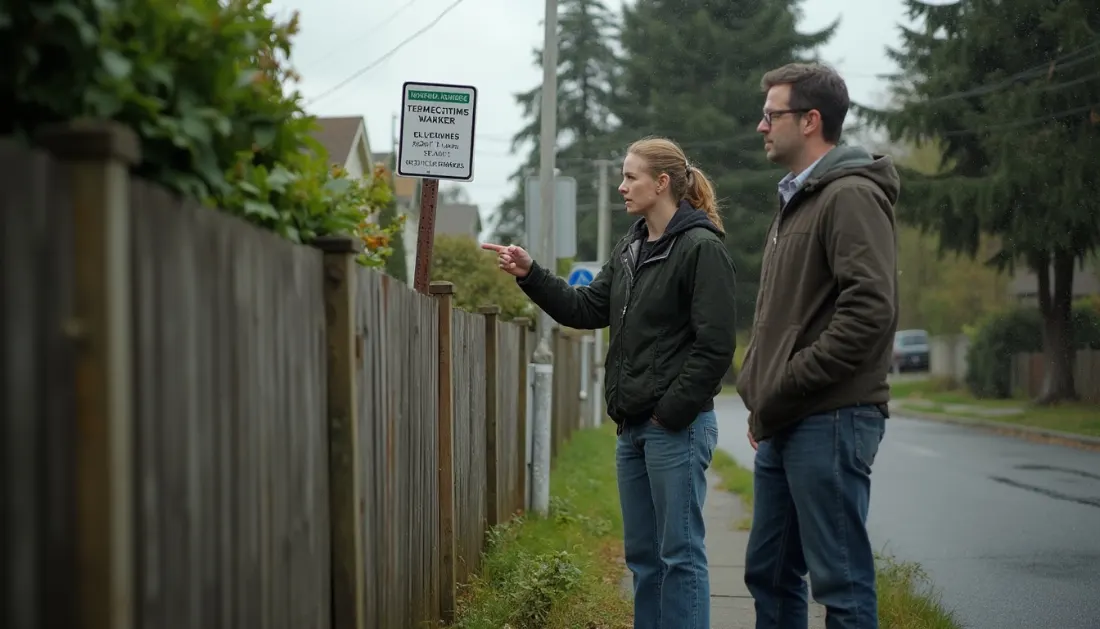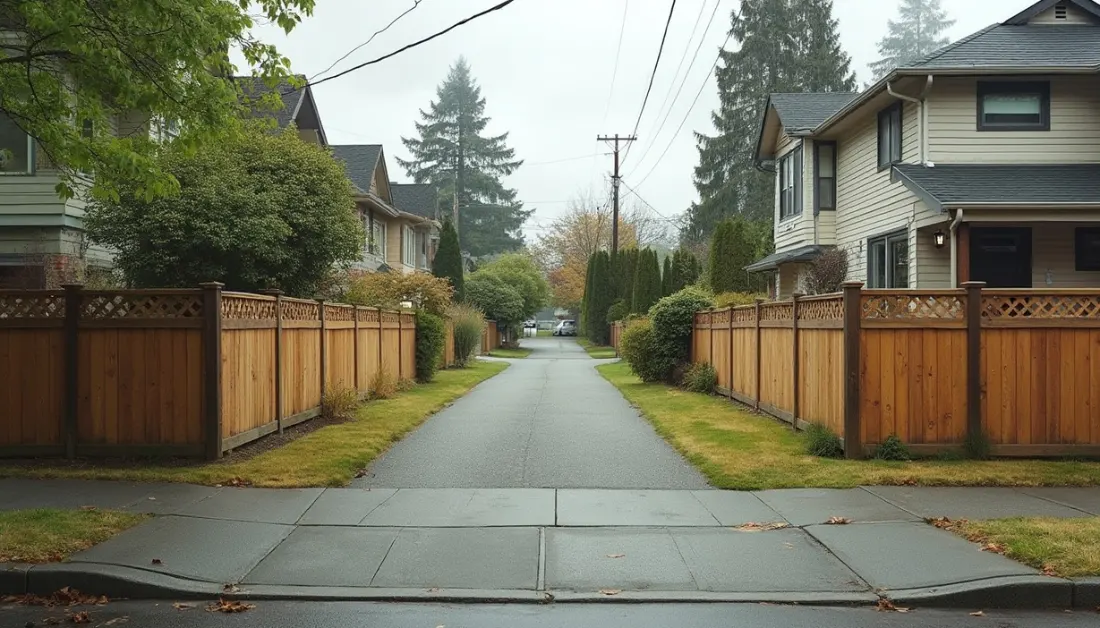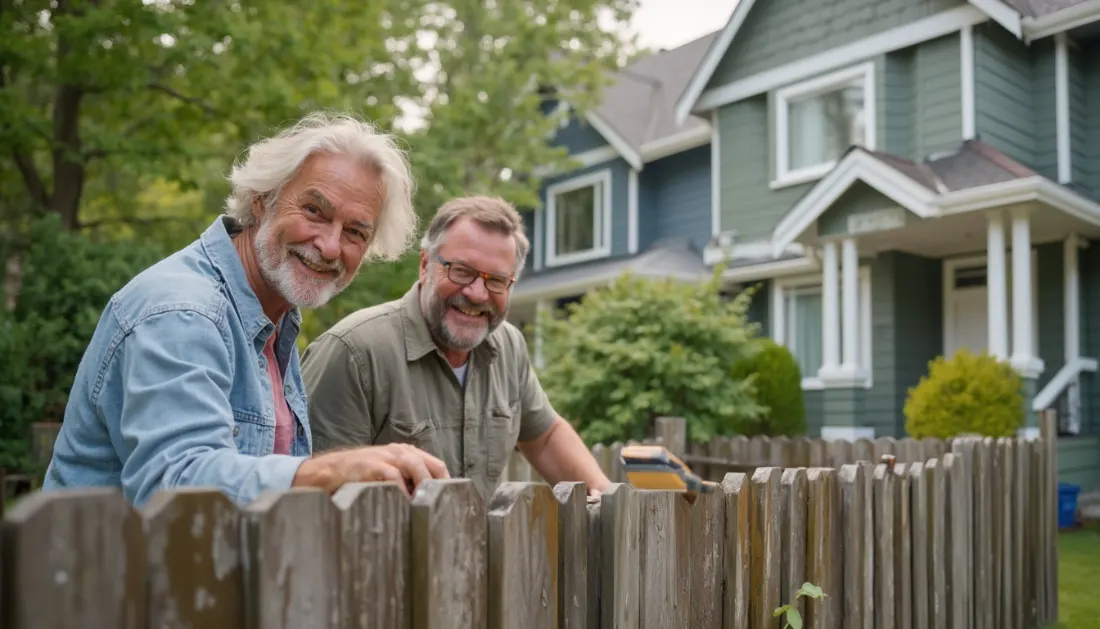If you're planning to build a neighbor fence in Washington, understanding the legal requirements and common disputes is essential. From cost-sharing to height restrictions, this guide will cover what you need to know to maintain good relations and stay compliant with local laws.
Key Takeaways
- Understand local zoning laws and shared responsibilities for fence maintenance to avoid disputes.
- Always notify neighbors in writing before starting a fence project to maintain good relationships.
- If conflicts arise, address issues amicably, and consider mediation before pursuing legal actions.
Navigating Neighbor Fence Laws and Disputes in Washington
Both homeowners and property developers need to understand Washington State law regarding fence laws. These laws are designed to ensure that property owners can erect fences without infringing on their neighbors' rights, maintaining good neighborly relations and compliance with local regulations.
Washington laws usually require neighbors to share fence maintenance responsibilities. Sharing this duty helps prevent conflicts and keeps fences in good condition. However, local zoning laws can vary significantly, dictating specific restrictions on fence height, materials, and placement. This variability means that homeowners must always check local regulations before starting a fence building project.
Addressing a fence encroachment by a neighboring landowner amicably is advisable. Often, verifying property lines and cooperating can resolve disputes without legal intervention, especially when it concerns a neighbor's property.
Introduction
More than just barriers, fences protect privacy, secure pets, and mark property boundaries clearly. However, before you start digging post holes, it's crucial to understand the legal landscape surrounding partition fence construction.
Having a written agreement with your neighbors detailing responsibilities and costs can help avoid future disputes. These agreements can cover everything from the type of materials to be used to the maintenance schedule, ensuring that both parties are on the same page.
Understanding Property Lines and Boundaries
Understanding your property lines is one of the first steps in any fence building project. Washington's fencing laws are generally broad, covering property rights and environmental issues, but specifics are managed at the local level. These local zoning laws can dictate everything from the height and materials of your fence to its exact placement.
A lawful fence in Washington must meet certain criteria, such as having a minimum of four horizontal barbed wires properly secured. Importantly, fences cannot be erected on public property and should not obstruct views for drivers or pedestrians.
Obtaining consent from neighboring property owners is necessary before installing a fence on the property line. This ensures that boundaries are respected and helps prevent disputes. If a neighbor's fence encroaches on your property, directly addressing the issue and verifying property lines with a survey often resolves the matter amicably.
Building a Fence on Shared Property Lines
Building a fence on a shared property line means both neighbors typically share maintenance rights and responsibilities. This shared ownership can lead to cost-sharing arrangements, where if one neighbor builds a fence, the other may be entitled to reimbursement for half the value if they use that fence.
Written agreements about fence maintenance and responsibilities can prevent misunderstandings and encourage cooperation. These agreements can be as simple as documenting who will handle repairs or as detailed as specifying the types of materials to be used.
A neighbor-friendly fence, designed to look the same on both sides, can enhance the aesthetic appeal for both parties. This thoughtful design choice can help maintain good relations, as both properties benefit equally from the fence's appearance.
Notifying Neighbors Before Starting Your Fence Project
In Washington, informing your neighbors in writing about your fence plans before proceeding is both good manners and a legal requirement. This notification should include details about the proposed construction, maintenance costs, timeline, and design of the fence.
Having a friendly conversation with your neighbor before sending a formal written notice can set a positive tone. Clear communication helps avoid misunderstandings and ensures compliance with legal requirements, fostering good neighborly relations.
Sharing Costs for Boundary Fences
In Washington, neighbors often must share the cost of boundary fences. This concept of shared responsibility emphasizes collaboration, ensuring that both parties contribute to the fence's construction and maintenance.
Washington law allows one party to build the fence and seek reimbursement if a neighbor refuses to contribute. This ensures that necessary fences can still be built even if one party is initially unwilling to share the cost.
Specific rules apply to hog fencing materials; if the adjacent property owner does not use the fence for hogs, they are not obligated to pay for the additional costs. This rule highlights the importance of communication and agreement on the type of fence to be built.
Fence Height Regulations in Washington
Local zoning ordinances dictate height restrictions for fences in Washington. Residential fences are usually capped at a maximum height of six feet. Front yard fences generally must not exceed four feet, while side and back yard fences can reach up to six feet.
These restrictions maintain community aesthetics and ensure safety. Consult local authorities to understand specific height regulations before starting your fence project.
Dealing with Spite Fences
A spite fence is built with the intent to annoy or harass a neighbor. These fences are often characterized by excessive height and opacity, obstructing light or views.
Washington law prohibits spite fences to protect property owners from malicious neighbor actions. If dealing with a spite fence, legal actions may include seeking a court order to stop its construction.
Spite fence regulations vary by local jurisdiction, so understanding the rules in your area is important. Consulting local authorities can provide clarity and guide you on appropriate steps.
Tree Trimming Rules Near Property Lines
In Washington, property owners can trim branches of neighboring trees that encroach onto their property, but only up to the property line. This principle of 'self-help' allows for necessary maintenance without overstepping boundaries.
Care must be taken not to harm the tree's health in the process. Significant harm or death to the tree can result in liability under timber trespass laws. Understanding and applying tree trimming rules properly helps maintain good neighbor relations and avoid legal issues.
Handling Non-Compliant Fences
When encountering a non-compliant fence, first document the violation thoroughly. This documentation should include photographs and detailed descriptions of the issue.
Then, contact your local building department or zoning office to file a complaint. Sending a formal notice to your neighbor about the code violations and your intent to report them can also be effective.
Knowing your local fence laws is essential, as regulations can vary significantly across different areas. Mediation is recommended to resolve disputes amicably before considering legal action.
Resolving Neighbor Disputes Over Fences
Fence disputes can be challenging, but structured ways to address them exist. Residents can report fence violations to local authorities if a fence doesn't meet established codes. Local governments may then issue a notice requiring compliance.
Gathering evidence, like survey maps, is essential before addressing encroachment issues with your neighbor. If negotiations fail, mediation services offer a neutral ground for resolving disputes.
Legal action should be a last resort, used only after all other resolution methods are exhausted. Maintaining a good relationship with neighbors is always preferable.
Protecting Your Rights Against Timber Trespass
Washington's timber trespass laws protect property owners from unauthorized damage to their trees. If someone damages a tree on your property without permission, they could be liable for triple the tree's injury value.
Significant harm or death to a tree from trimming can also result in liability. Property owners can seek compensation for such damages, typically awarded by a judge.
Getting a Land Survey for Accurate Property Lines
Accurately knowing property boundaries is essential for any fence building project. Although a land survey isn't legally required before building a fence, it is highly recommended to avoid disputes.
A professional land survey clearly defines property lines, ensuring your fence is built within your boundary line. This step can save you from potential legal issues and neighbor disputes in the future.
Maintaining Good Neighbor Relations
Good neighbor relations are key to a peaceful living environment. Here are some tips to maintain good relations with your neighbors:
- Open communication about fence construction can prevent many disputes.
- Maintaining a respectful demeanor during disputes can significantly influence the outcome, whether in legal or mediation settings.
- Discussing expected costs and maintenance responsibilities with neighbors can foster cooperation.
A neighbor-friendly fence with uniform aesthetics on both sides can enhance goodwill between properties. This thoughtful fence design approach promotes harmony and mutual respect.
Summary
Navigating the complex world of fence laws and neighbor disputes in Washington can be challenging, but understanding the basics can make the process smoother. From knowing your property lines to maintaining good neighbor relations, each step is crucial for a successful fence building project.
Remember, good fences make good neighbors. By following the guidelines and maintaining open communication, you can ensure that your new fence enhances both your property and your relationships.
Frequently Asked Questions
Do I need my neighbor's permission to build a fence on the property line?
Yes, it's best to get your neighbor's permission before building a fence on the property line to avoid disputes and ensure everything is within legal boundaries. It helps keep the peace and makes the process smoother!
What should I include in my notification to my neighbor about a new fence?
Make sure to include details about the fence's design, timeline for construction, and any maintenance costs. This way, your neighbor will be well-informed about what to expect!
How high can I build my fence in Washington?
You can build your fence up to six feet high in most residential areas in Washington, but if it's in the front yard, it should be capped at four feet.
What can I do if my neighbor refuses to share the cost of a boundary fence?
If your neighbor won't share the cost of a boundary fence, you can go ahead and build it and then ask them to reimburse you. Just keep in mind local laws that may support this approach!
What actions can I take against a spite fence?
You can take legal action by seeking a court order to stop the construction of the spite fence or to have it removed. It's best to consult with a lawyer to explore your options.








